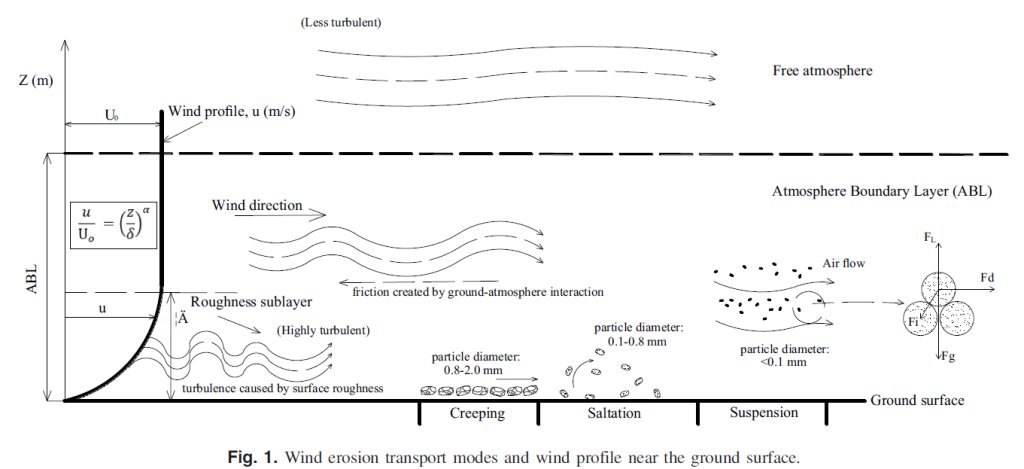
Our paper titled “Wind erosion mitigation using microbial-induced carbonate precipitation” has been published in the Journal of Geotechnical and Geoenvironmental Engineering.
CITATION
Gao K., Bick P., Suleiman M.T., Xiwei Li, Helm J., Brown D.G., and Zouari N. 2023. “Wind Erosion Mitigation Using Microbial Induced Carbonate Precipitation (MICP)” Journal of Geotechnical and Geoenvironmental Engineering. 149(8):04023053.
ABSTRACT
The wind erosion resistance of the microbial-induced carbonate precipitation (MICP)-treated soil was investigated in this study using wind tunnel experiments. A wind tunnel was calibrated to simulate the atmospheric boundary layer (ABL). The erosion modes of the soil samples with increasing and cyclic wind loading were analyzed using digital imaging techniques. The calcium carbonate content and its uniformity in treated soils were determined using an atomic absorption spectrometer. The effect of soil relative density, soil type, MICP treatment protocol, and wind loads on wind erosion mitigation was evaluated. Based on the testing conditions, a MICP treatment protocol using 0.25 pore volume of bacteria medium (Sporosarcina pasteurii, ATCC 11859) followed by 0.25 pore volume of 0.3 M cementation medium was determined as the optimal treatment for increasing wind load resistance. A calcium content of 0.28% for the soil surface layer was the minimum calcium carbonate content necessary to mitigate wind erosion for the increasing wind loading condition. For the cyclic wind loading condition, a MICP treatment protocol to achieve a minimum calcium carbonate content of 0.68% was determined as the optimum treatment protocol.
